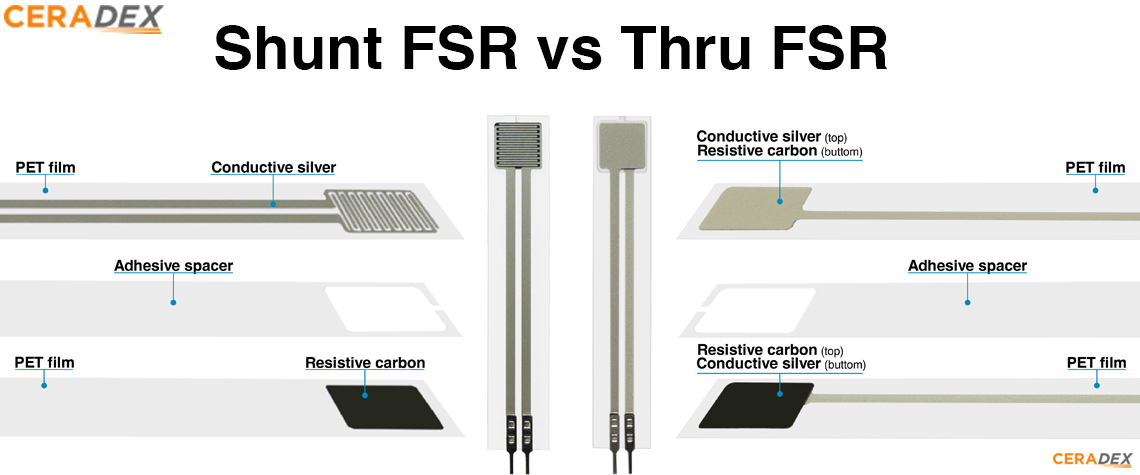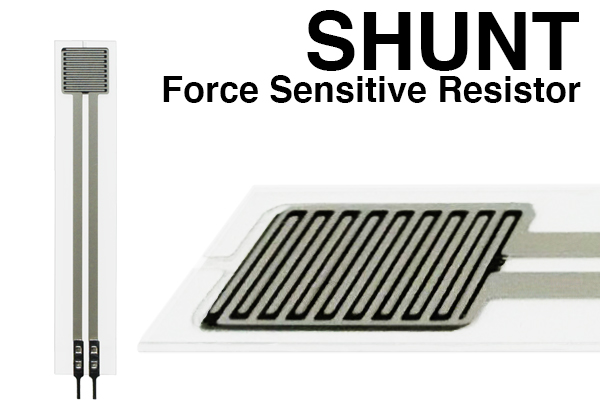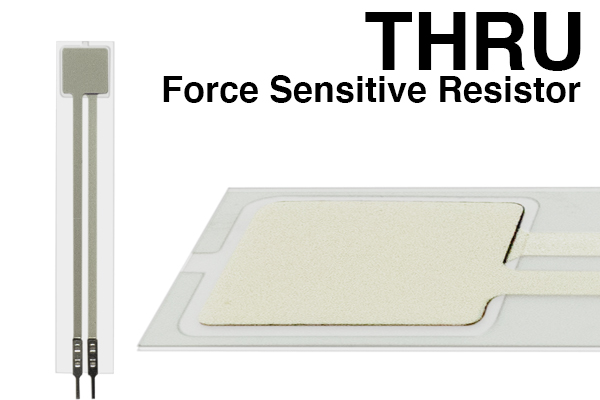In Tech | Shunt Mode FSR vs. Thru Mode FSR
Shunt Mode FSR vs. Thru Mode FSR
Post by Allen Huang, Updated on September 1st, 2021

About FSR
Force Sensitive Resistor (FSR) also known as Force Sensing Resistor, is an electronic sensing element that outputs resistance values when force or pressure is applied. The greater pressure, the lower resistance outputs. Its construction is made of flexible polymer sheets (PET) and screen-printed conductive materials. It is ultra-thin, flexible, and more importantly, it is customizable. Asides from dimension and sensor configuration, internal specification is also tunable in accordance with project need.
There are two types of FSR – Shunt Mode FSR and Thru Mode FSR. Both type’s functionality is identical, but with different construction method and pressure.
Shunt mode FSR

Shunt Mode Force Sensitive Resistor is for wide pressure range sensing. The resistance varies when great pressure is applied. It is constructed with two layers of PET film. The first layer is printed with conductive silver in the shape of interdigitated claws and the second layer is printed with resistive formulated carbon. Shunt mode FSRs generate resistance when one layer contact another.
Example of sensor applications:
- Electronic music instruments
- Integrated Force Sensitive Resistor in relation with sound to imitate music keys and pads.
- Inventory control
- Integrated Force Sensitive Resistor for real-time inventory monitoring and displacement
- Occupancy detection
- Integrated Force Sensitive Resistor on sit or floor to detect pressure from occupancy
Thru mode FSR

Thru Mode Force Sensitive Resistor is for light pressure precise sensing. It is constructed with two layers of PET film. Both layers are printed with conductive silver first then resistive carbon on top of it. Comparing to Shunt mode FSR with interdigitated silver claws, Thru FSR printed both materials that covers the whole sensing area. Thru mode FSRs generate resistance when one layer contact another.
Example of sensor applications:
- Electronics stylus
- Integrated Force Sensitive Resistor to facilitate relations between user writing pressure and keystroke output
- Robotic Arm
- Integrated Force Sensitive Resistor to monitor and control the pressure point of robotic arm
- Integrated Force Sensitive Resistor to protect against robotic arm impact
- Machine
- Integrated Force Sensitive Resistor to monitor moving part counts and assist with maintenance
Conclusion
Smart and IOT devices are thriving in the world we live in today, and integrated sensors play an important role in these devices. According to market status, the sensor industry will grow at the rate of 10% CAGR from 2021 to 2028. The needs for small, flexible, lightweight, and cost-effective sensor integrated solution are more apparent than ever. We believe that Force Sensitive Resistor (FSR), which focuses on pressure sensing can meet these needs. Its applications are limitless and across industries that include IOT, medical, automation, logistics, industrial, and much more.
With our patented Force Sensitive Resistor and 25 years of experience in material science and screenprint, choose our sensor for your next project need. Feel free to contact our sales for more questions.



